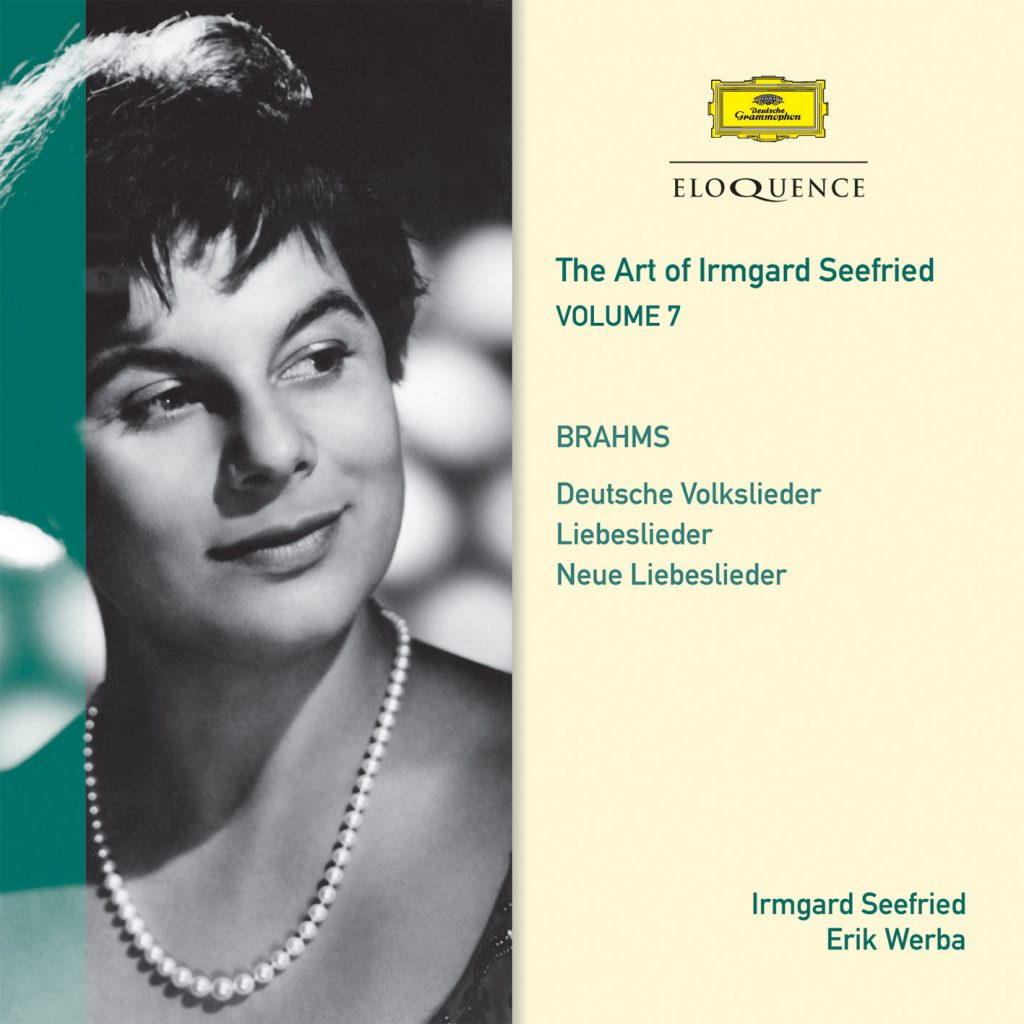‘If I were condemned to hear only one voice for the remainder of my life I think it might well be hers. If I wanted to be charmed, to laugh or cry I would find her the perfect companion. In her singing … we hear someone whose every utterance bespeaks natural sincerity and truthful feeling’
ALAN BLYTH on IRMGARD SEEFRIED (Gramophone)
After Irmgard Seefried’s death in 1988, her contemporary Elisabeth Schwarzkopf – never one to dish out compliments lightly – commented: ‘All of us envied her, because what we had to achieve laboriously worked for her so naturally and as a matter of course, because she knew how to sing from the heart’.
Freshness, spontaneity, natural warmth of feeling, allied to a voice of gleaming beauty and a delightful stage presence: these were the hallmarks of a much-loved soprano who for three decades charmed and moved audiences in the theatre and concert hall, her face as expressive as her voice. As John Steane memorably put it in Gramophone, ‘it was as though she wore her own spotlight’.
Born in the Swabian town of Köngetried in 1919, Seefried was ‘discovered’, aged twenty, by Herbert von Karajan in Aachen, where she made her operatic debut as the Priestess in ‘Aida’. In 1943, she sang Eva in ‘Die Meistersinger’ for the Wiener Staatsoper, initiating an association that lasted until 1976. It was in Strauss and Mozart that Seefried was most admired.
Issued over eleven single-disc volumes, Deutsche Grammophon/Eloquence pays tribute to Irmgard Seefried, bringing back to circulation several recordings that have never previously been issued on CD. The music ranges through opera and oratorio, with an especially generous offering of art song from a range of composers, including Schubert, Schumann, Wolf, Hindemith and Egk. The notes for the series have been written by that leading connoisseur of the voice, Richard Wigmore.
Seefried’s radiance and imaginative strength also made her a cherishable Lieder singer over an enterprisingly wide repertoire. Her spontaneous immediacy of response and emotional warmth are priceless assets in these cameos of love yearned for, love lost and love betrayed. Her trusted pianist, Erik Werba too, reveals a natural feeling for Brahmsian rubato, sensing unerringly when to linger and when to urge on.
Seefried’s unselfconscious charm was in its element, too, in Brahms’s ‘Liebeslieder’ and ‘Neue Liebeslieder’ waltzes, most famously in a 1952 Edinburgh Festival performance where her partners included Kathleen Ferrier and Julius Patzak. These studio recordings, with Waldemar Kmentt, Eberhard Waechter and the Finnish contralto, Raili Kostia, date from a decade later when her higher notes could grow a tad shrill. But she and her colleagues relish the lyric grace and vivacity of these delectable salon pieces with Werba and Weissenborn ever-alert to their Viennese sway and lilt.
JOHANNES BRAHMS
11 Deutsche Volkslieder
Erik Werba, piano
Liebeslieder, Op. 52
Neue Liebeslieder, Op. 65
Raili Kostia, contralto
Waldemar Kmentt, tenor
Eberhard Waechter, baritone
Erik Werba & Günther Weissenborn, piano
Irmgard Seefried, soprano
Recording producers: Hans Weber (1–11); Dr. Manfred Richter (12–44)
Balance engineers: Gerhard Henjes (1–11); Klaus Scheibe (12–44)
Recording locations: Brahms-Saal, Musikverein, Vienna, Austria, 5–8 February 1962 (1–11); Grosser Saal, Musikverein, Vienna, Austria, 24–27 September 1962 (12–44)
‘Seefried sings [the Brahms ‘Deutsche Volkslieder’] quite beautifully’ Gramophone
‘there is lovely singing here, both in the solo numbers and in the quartets, while the piano playing is extremely expert’ Gramophone

